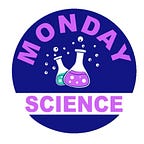Episode 15: Microwaved Tea, Sustainable 3D Printing, and Multi-Use Vaccines
Episode summary written by Dagny Reese.
In this week’s episode of Monday Science, listen to this Dr. Bahijja Raimi-Abraham as she provides some insights on the latest research relating to Science, Technology and Healthcare from this August. Listen or read more to find out about how microwaving your water might affect your tea, how 3D printing is going green, or how vaccines are being used in new ways to treat illnesses.
Have you ever noticed that tea made in a microwave tastes different?
In early August, the American Institute of Physics published a study exploring how heat distributes when placing a liquid in the microwave.
While many people prefer to use a kettle or the stove to boil, many people often turn to the microwave to heat their water in a pinch. But have you ever noticed that the tea seems a bit different than usual? In early August, the American Institute of Physic’s published a study exploring heat distribution when placing a liquid in the microwave.
Usually, in a kettle or on the stovetop, water is heated from top to bottom. As the water at the bottom is heated, it moves up and the cold water moves down, resulting in a uniform temperature. This process of heating is called thermal convection and occurs due to the movement of fluids. Unlike a kettle, however, where the flow of liquid results in a uniform final temperature, what researchers call “volumetric” heating in microwave results in the water at the top being a lot hotter than at the bottom.
To help combat this issue, researchers have proposed an accessory that improves heat distribution, that works to create a flow of water similar to the process that occurs within a kettle — hopefully, improving the tea drinking experience for those using microwaves!
Please check out the article on AIP for more information.
How is 3D printing going green and turning to more sustainable materials?
3D printing, since its invention has been used for a plethora of technologies, and in the case of Dr. Bahijja Raimi-Abraham’s research, has been used for creating small scaffolding and components of medications. While most 3D printing operates on the principle of creating a 3D printed object from a computer model by arranging layers of material on top of each other, they usually use harsh chemicals like UV resin or plastics that can be very harmful to the environment. 3D printing is now even used to create infrastructure, like buildings.
However, according to Researcher Dr. Sarbajit Banerjee at Texas A&M University, this can have a huge environmental impact in terms of the carbon footprint. To address this issue, Dr. Banerjee has been working on developing new 3D printing materials created from soil with a team of other researchers. While there is still much research to be done regarding the environmental impact of this new technology, the Texas A&M team have managed to create load-bearing structures that were presented at the 2020 American Chemical Society Conference, which can be read more about here.
Can the BCG vaccine be used to prevent COVID-19?
The BCG or Bacillus Calmette–Guérin vaccine has been for nearly a century to prevent tuberculosis; however, new research is showing it might also be an effective treatment for other illnesses, including SARS-CoV-2. While created for TB, the vaccine has a general stimulating effect on the innate immune system, creating a “boosting” impact in the longterm — and even potentially reducing susceptibility to certain respiratory illnesses!
A new study published in Cell Reports Medicine, completed in the Netherlands, has indicated that this boosting effect to immunity might be helpful, as it is associated with decreased severity in some symptoms of SAS-CoV-2, such as fatigue. It was also found that the BCG vaccine is not associated with an increased incidence of symptoms, meaning that individuals with this vaccine are not at increased risk. The BCG vaccine has also been explored as a potential solution to manage Type 1 diabetes.
If you are interested in learning more about the treatment of TB, please lookout for a future episode where Dr. Bahijja Raimi-Abraham will discuss Nanoparticles as a potential treatment for latent TB with a PhD student. Click here for more information on the Raimia-Abraham Research group.
Want to hear the full episode? Please check out the Monday Science podcast on Spotify, Apple Podcasts, Google Podcasts, and Stitcher.
If you have any questions you’d like to be answered by Dr Bahijja, feel free to send them in via the website chat, or email MondayScience2020@gmail.com. You can also send us your questions as a voice message via https://anchor.fm/mondayscience/message. We love to hear your thoughts!
Were you confused about any of the terms used in this summary?
Carbon Footprint — Green House Gas emissions associated with either an action, a person, an event, a nation, etc.
Bacillus Calmette–Guérin — A vaccine used to primarily prevent TB.
Type 1 Diabetes — An autoimmune disease resulting in inadequate production of insulin by the pancreas.
Nanoparticles — a small microscopic particle. Sometimes called an ultrafine particle.
Image Credits:
Photo of Tea Cups taken by Joanna Kosinska.
Photo of Vaccine and Needle from the CDC Public Health Image Library.
